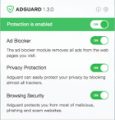What is ExpandedOperation
ExpandedOperation is an adware application that targets Mac platform. Adware is short for ‘ad software’. Additionally, some malicious software contains adware or behaves similarly to adware. Adware displays unwanted ads that appear in pop ups, unclosable windows or inline text links on browser. In order to display unwanted ads as often as possible adware can change web browser settings. The developers of adware do so in order to generate money via third-party ad network. Thus every your click on the ads earns profit for them.
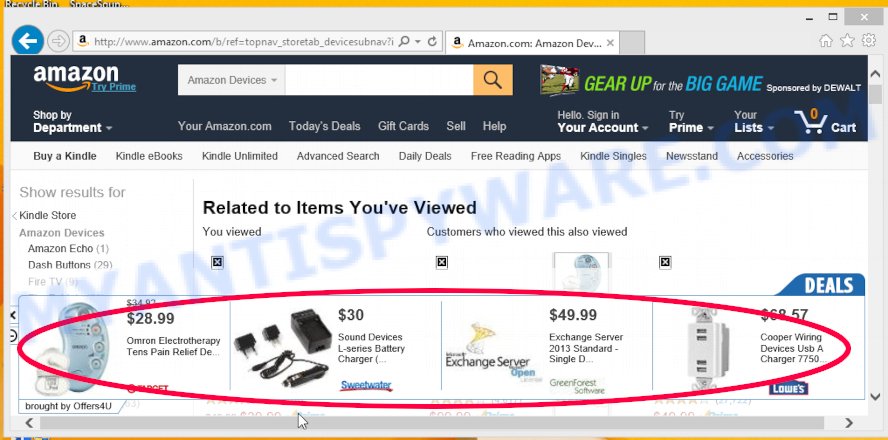
Unwanted ads
Another reason why you need to remove the ExpandedOperation adware is its online data-tracking activity. It can analyze the location and which Internet websites you visit, and then present ads to the types of content, goods or services featured there. Adware makers can collect and sell your browsing information and behavior to third parties
You should remove adware sooner. Here, in this blog post below, you can found the best possible tutorial on How to remove ExpandedOperation and get rid of intrusive advertisements from your MAC for free.
How does ExpandedOperation get on your computer
Adware may be spread with the help of trojan horses and other forms of malicious software, but most commonly, adware gets onto machine by being attached to some freeware. Many authors of free programs include additional software in their installer. Sometimes it’s possible to avoid the installation of any adware software: carefully read the Terms of Use and the Software license, select only Manual, Custom or Advanced setup type, disable all checkboxes before clicking Install or Next button while installing new freeware.
Threat Summary
| Name | ExpandedOperation |
| Type | adware, PUP (potentially unwanted program), Mac virus, Mac malware |
| Detection Names | Osx.Adware.Cimpli, OSX.Trojan.Gen, ApplicUnwnt, Adware.MAC.Generic, MacOS.Agent-MT, Trojan-Downloader.OSX.Adload, Program:MacOS/Vigram.A and Adware/Adload!OSX |
| Distribution | Free software installers, malicious pop up ads, fake update tools and torrent downloads |
| Symptoms | When you go to a webpage, you are randomly redirected to another web site that you do not intend to visit, pop-up advertisements won’t go away, new entries appear in your Applications folder, unwanted browser add-ons or toolbars keep coming back, your internet browser start page has changed without your permission, low ping but slow Internet. |
| Removal | ExpandedOperation removal guide |
How to remove ExpandedOperation adware
Without a doubt, the ExpandedOperation adware is harmful to your MAC. So you need to quickly and completely remove this unwanted software. To remove ExpandedOperation, you can use the manual removal tutorial that are given below or free malicious software removal tool such as MalwareBytes (it is free). We advise you use automatic removal solution that will help you to get rid of ExpandedOperation adware easily and safely. Manual removal is best used only if you’re well versed in MAC or in the case where adware is not uninstalled automatically. Read this manual carefully, bookmark it or open this page on your smartphone, because you may need to close your browser or reboot your computer.
To remove ExpandedOperation, use the following steps:
- Remove unwanted profiles on Mac device
- Check the list of installed apps
- Remove ExpandedOperation related files and folders
- Scan your Mac with MalwareBytes
- Remove ExpandedOperation from Safari, Chrome, Firefox
- How to stay safe online
Remove unwanted profiles on Mac device
ExpandedOperation can make changes to the Mac system such as malicious changes to browser settings, and the addition of malicious system profiles. You need to check the system preferences, find and remove malicious profiles and ensure your settings are as you expect.
Click Apple menu ( ![]() ) > System Preferences.
) > System Preferences.
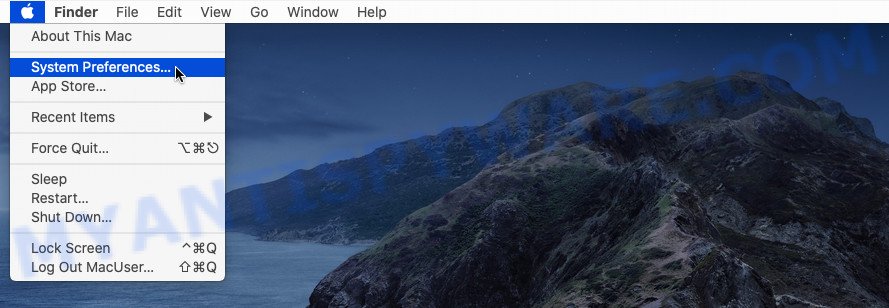
In System Preferences, select Profiles. if there is no Profiles in the list of preferences, that means there are no profiles installed on the Mac device. If there is Profiles in the list, then click on it, then select a profile associated with ExpandedOperation.
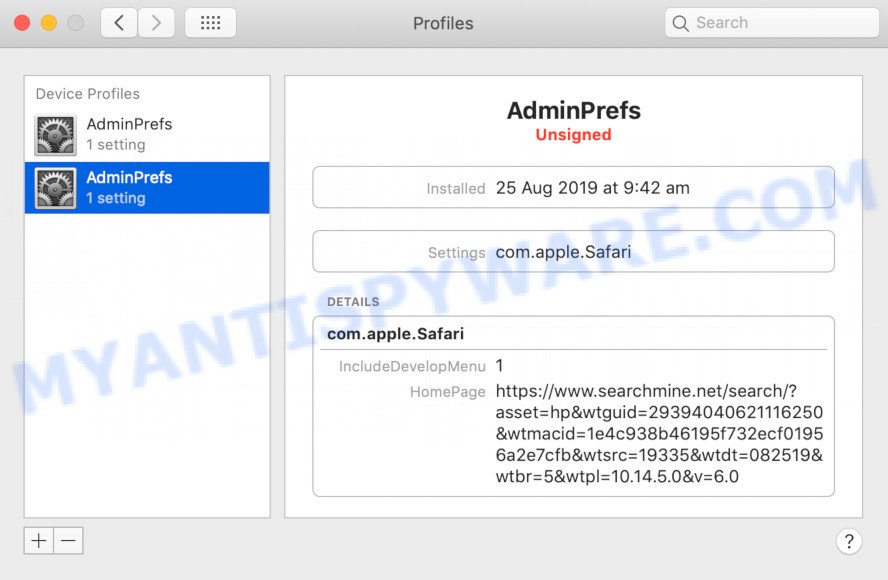
To delete a malicious profile, click on the minus button ( – ) located at the bottom-left of the Profiles screen.
Check the list of installed apps
In the next step, you need to check the list of installed software on your Mac and remove all unused, unknown and dubious applications.
Open Finder and click “Applications”.
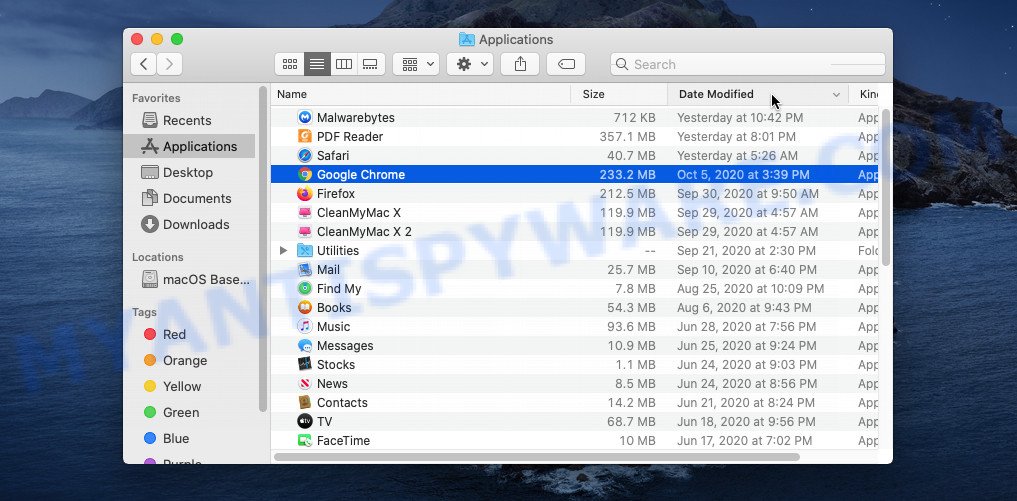
Carefully browse through the list of installed apps and remove all dubious and unknown software.
Once you’ve found anything dubious that may be the ExpandedOperation adware or other potentially unwanted program, then right click this application and select “Move to Trash”. Once complete, Empty Trash.
Remove ExpandedOperation related files and folders
Now you need to try to find ExpandedOperation related files and folders, and then delete them manually. You need to look for these files in certain directories. To quickly open them, we recommend using the “Go to Folder…” command.
ExpandedOperation creates several files, these files must be found and removed. Below is a list of files associated with this unwanted program.
- /Library/LaunchDaemons/com.ExpandedOperation.system.plist
- ~/Library/LaunchAgents/com.ExpandedOperation.service.plist
- /Library/Application Support/.(RANDOM)/System/com.ExpandedOperation.system
- ~/Library/Application Support/.(RANDOM)/Services/com.ExpandedOperation.service.app
Some files created by ExpandedOperation are hidden from the user. To find and delete them, you need to enable “show hidden files”. To do this, use the shortcut CMD + SHIFT + . Press once to show hidden files and again to hide them. There is another way. Click Finder -> Applications -> Utilities -> Terminal. In Terminal, paste the following text: defaults write com.apple.finder AppleShowAllFiles YES

Press Enter. Hold the ‘Option/alt’ key, then right click on the Finder icon in the dock and click Relaunch.
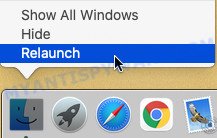
Click on the Finder icon. From the menu bar, select Go and click “Go to Folder…”. As a result, a small window opens that allows you to quickly open a specific directory.

Check for ExpandedOperation generated files in the /Library/LaunchAgents folder

In the “Go to Folder…” window, type the following text and press Go:
/Library/LaunchAgents
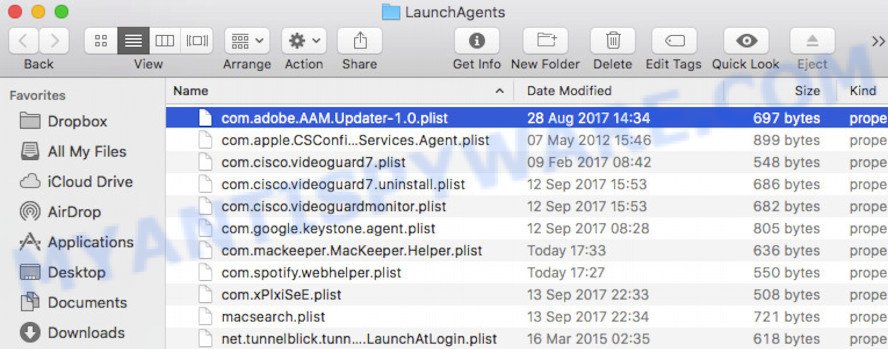
This will open the contents of the “/Library/LaunchAgents” folder. Look carefully at it and pay special attention to recently created files, as well as files that have a suspicious name. Move all suspicious files to the Trash. A few examples of files: macsearch.plist, com.google.defaultsearch.plist, , search.plist, com.machelper.plist, com.ExpandedOperation.service.plist, com.net-preferences.plist and installapp.plist. Most often, potentially unwanted programs, browser hijackers and adware create several files with similar names.
Check for ExpandedOperation generated files in the /Library/Application Support folder

In the “Go to Folder…” window, type the following text and press Go:
/Library/Application Support
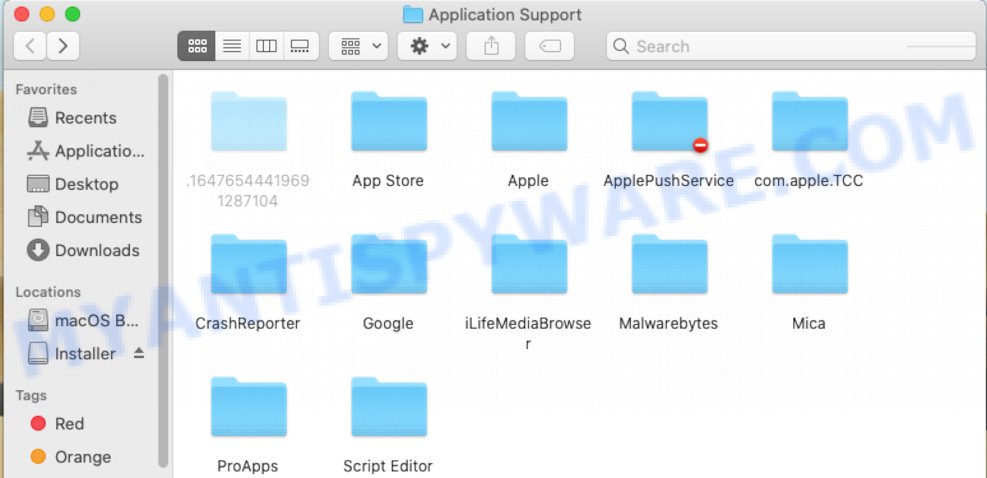
This will open the contents of the “Application Support” folder. Look carefully at its contents, pay special attention to recently added/changed folders and files. Check the contents of suspicious folders, if there is a file with a name similar to com.ExpandedOperation.system, then this folder must be deleted. Move all suspicious folders and files to the Trash.
Check for ExpandedOperation generated files in the “~/Library/LaunchAgents” folder

In the “Go to Folder…” window, type the following text and press Go:
~/Library/LaunchAgents

Proceed in the same way as with the “/Library/LaunchAgents” and “/Library/Application Support” folders. Look for suspicious and recently added files. Move all suspicious files to the Trash.
Check for ExpandedOperation generated files in the /Library/LaunchDaemons folder
In the “Go to Folder…” window, type the following text and press Go:
/Library/LaunchDaemons

Carefully browse the entire list of files and pay special attention to recently created files, as well as files that have a suspicious name. Move all suspicious files to the Trash. A few examples of files to be deleted: com.installapp.system.plist, com.machelper.system.plist, com.macsearch.system.plist, com.search.system.plist and com.ExpandedOperation.system.plist. In most cases, potentially unwanted programs, browser hijackers and adware software create several files with similar names.
Scan your Mac with MalwareBytes
If you are still having issues with the ExpandedOperation removal or just wish to scan your Mac device occasionally for adware and other malicious software, then download MalwareBytes. It’s free for home use, and searches for and removes various unwanted applications that attacks your machine or degrades computer performance. MalwareBytes Free can delete adware, PUPs, browser hijackers and toolbars as well as malicious software, including ransomware and trojans.
Visit the following page to download the latest version of MalwareBytes Free for Mac OS.
21017 downloads
Author: Malwarebytes
Category: Security tools
Update: September 10, 2020
When downloading is complete, close all programs and windows on your Apple Mac. Run the saved file. Follow the prompts.
The MalwareBytes Anti Malware will automatically start and you can see its main screen as shown on the screen below.
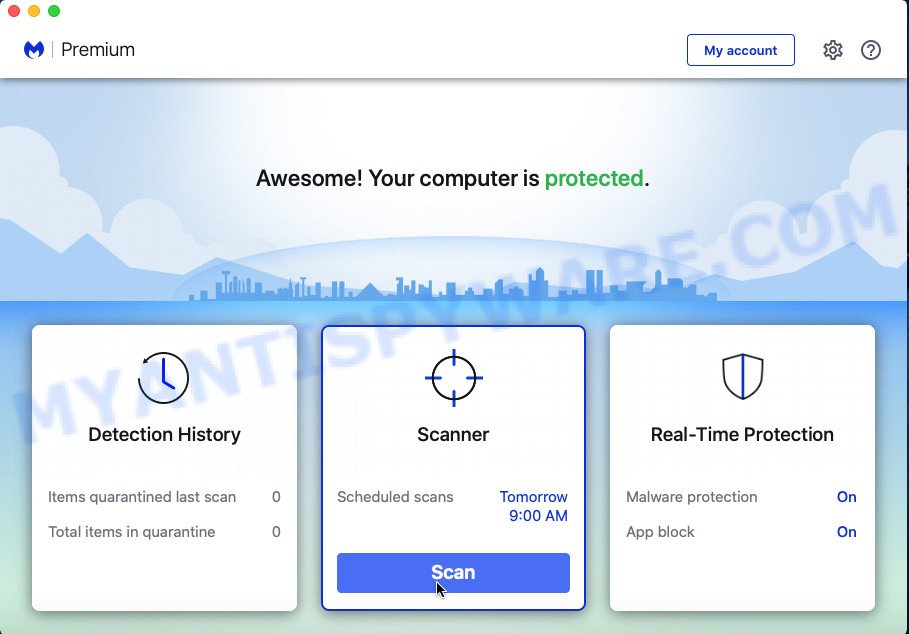
Now click the “Scan” button to perform a system scan with this tool for the ExpandedOperation . Depending on your MAC system, the scan may take anywhere from a few minutes to close to an hour.

Once MalwareBytes Anti-Malware has finished scanning, it will open the Scan Results. Make sure to check mark the items which are unsafe and then click the “Quarantine” button. The MalwareBytes AntiMalware will begin to get rid of ExpandedOperation adware.
Remove ExpandedOperation from Safari, Chrome, Firefox
If you’re still getting ExpandedOperation adware software, then you can try to remove it by removing malicious addons.
You can also try to remove ExpandedOperation adware by reset Chrome settings. |
If you are still experiencing problems with ExpandedOperation removal, you need to reset Mozilla Firefox browser. |
|
How to stay safe online
Run an ad blocking utility like AdGuard will protect you from malicious advertisements and content. Moreover, you can find that the AdGuard have an option to protect your privacy and block phishing and spam web sites. Additionally, ad blocker programs will allow you to avoid intrusive pop up advertisements and unverified links that also a good way to stay safe online.
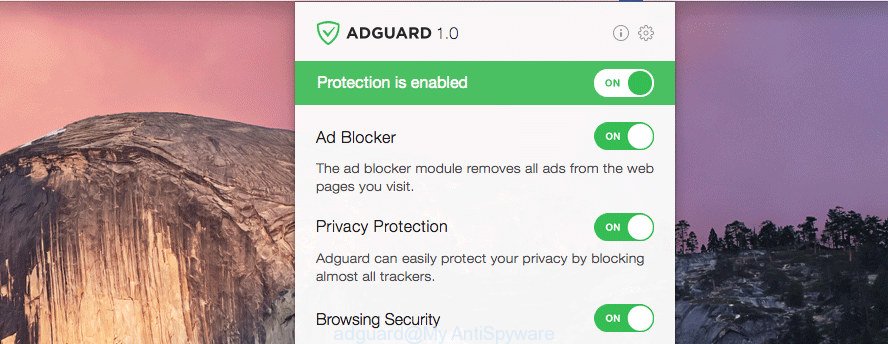
Visit the page linked below to download AdGuard.
3779 downloads
Author: © Adguard
Category: Security tools
Update: January 17, 2018
When the download is done, run the downloaded file. The “Setup Wizard” window will show up on the computer screen.
Follow the prompts. AdGuard will then be installed. A window will show up asking you to confirm that you want to see a quick tutorial. Click “Skip” button to close the window and use the default settings, or click “Get Started” to see an quick instructions that will assist you get to know AdGuard better.
Each time, when you start your MAC system, AdGuard will start automatically and stop unwanted advertisements, block malicious and misleading web-pages.
To sum up
Once you have removed the adware using this steps, Mozilla Firefox, Google Chrome and Safari will no longer display any unwanted ads when you browse the Internet. Unfortunately, if the guidance does not help you, then you have caught a new adware, and then the best way – ask for help.
Please create a new question by using the “Ask Question” button in the Questions and Answers. Try to give us some details about your problems, so we can try to help you more accurately. Wait for one of our trained “Security Team” or Site Administrator to provide you with knowledgeable assistance tailored to your problem with the annoying ExpandedOperation adware.

